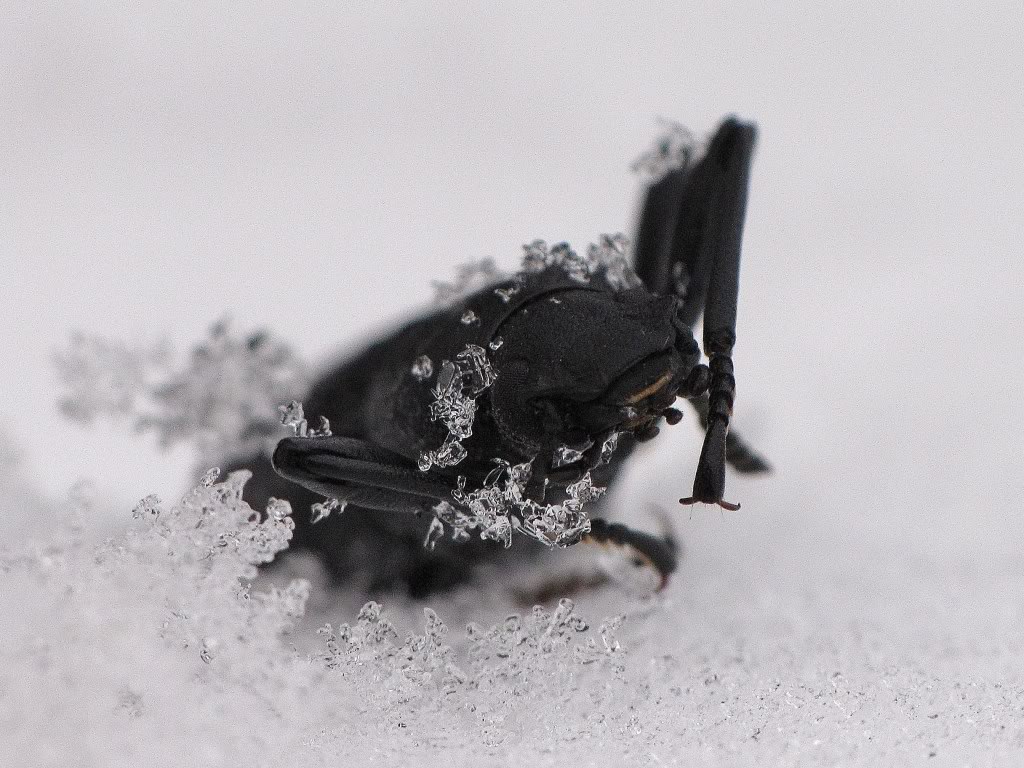
Adaptation
The Adaptation of the
Upis Ceramboides,
or the Roughened Darkling Beetle, is very unique.
They can survive in extreme cold weather conditions.
They contain an antifreeze-like molecule within their
cells called xylomannan, which helps them survive in harsh
conditions that can get up to 100 degrees Fahrenheit below 0.
In most bugs or insects, when ice crystals start to form, it causes the water to be drawn out and the insect dies. But the antifreeze molecule in the Upis Ceramboides helps to not let these crystals form on them at all. An advantage also is that the antifreeze molecules are very similar to their own cell membrane and most likely the molecules would not fit if it weren’t so similar. (Miller 1978)
